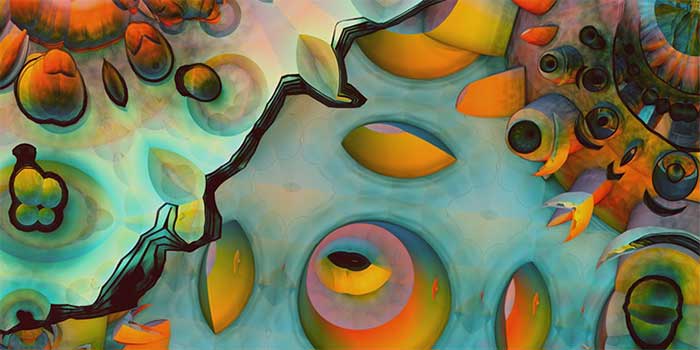[ad_1]
If you paint with oils you will need a solvent to clean your brushes and thin your paints. Of course, if you paint with water soluble oils then your solvent will be water.
Turpentine is a standard solvent used to thin ordinary oil paints. You can purchase turpentine in any art supply store or hardware store. In some cases, the kind of turpentine you buy in a hardware store may be fresher because of the shorter turnaround time.
Some artists work with mineral spirits. These are also available in hardware stores. To save money, buy the largest available quantity and use a smaller container when you do your actual painting.
Tube oil paint (ie, oil paint directly from the tube) can be difficult to manipulate. Some colors are stiffer than others and may be hard to even distribute over your canvas. To solve this problem, artists often need to mix their tube paints with a so-called painting medium.
A painting medium is a liquid solution that makes the oil paint smoother and easier to manipulate. Adding any one of a number of different painting mediums changes the consistency of the paint. Some mediums are meant to make the paint thinner for glazing and others are meant to make the paint thicker for impasto painting. There are also mediums to shorten or lengthen the drying.
The most basic medium is regular turpentine. Adding a little turpentine thins oils paint. Another frequently used medium is linseed oil, which makes the paint more fluid but, over time, it also offers to yellow the paint. The most commonly used medium is a combination of turpentine and linseed oil, sometimes with the addition of a little damar varnish.
Begin by experimenting with a half-and-half mixture of turpentine and linseed oil. Because linseed oil slows down the drying process, you may want to increase the proportion of turpentine. A good mixture is three parts of turpentine to one part of linseed oil.
Once you find the medium you like, mix a batch and store it in a tightly sealed jar. As you paint, dip your brush into the medium, then add a little paint, then mix them together on your palette (mixing surface).
Preliminary compositions can be drawn on your canvas with a so-called thin turp wash, ie, a little bit of paint with a lot of turpentine. A turp wash evaporates very quickly, so you can quickly paint over them.
In general, the more turpentine you use the matter the finish will be and the more linseed oil you use the glossier it will be. If you like robust, permanently visible brushstrokes, you may want to use less medium. Dry brush is one technique where you do not add any medium at all.
Special painting mediums are also available that change the oil paint in different ways. The most common are those that shorten or lengthen the drying time of the oil paint. Check your art supply store or the Internet to see the available types of mediums. All medium bottles will show instructions on how best to use the particular medium.
Oil paintings must be varnished to protect them from undesirable elements such as dirt and toxins. Varnish is a clear solution made from a resin and turpentine or some other solvent.
In art-supply stores you will see two major types, retouching varnish and picture varnish. Depending on the paint layer thickness, it can take six months or more for an oil painting to dry. In the meantime, the surface of the painting needs to be protected with a coat of retouching varnish. After the varnish is applied, the turpentine evaporates, and leaving a thin protective coat. You can apply retouching varnish as soon as the paint feels dry to the touch.
Picture varnish contains more resin than retouching varnish. It should be applied about six months after you complete a painting. If you paint with impasto-like brushstrokes, you may have to wait as long as a year before applying the final coat.
Both types of varnish are applied in the same manner. Using a broad, flat nylon brush, apply the varnish evenly using horizontal strokes. You can also use retouching varnish to brighten dry dull patches in your painting.
[ad_2]
Source

